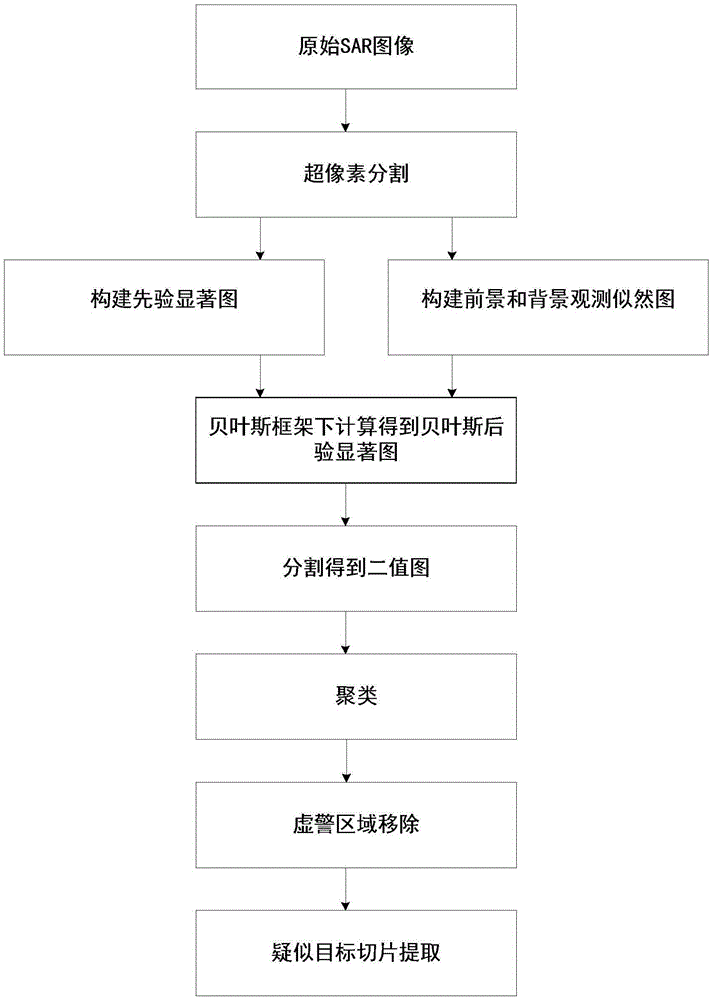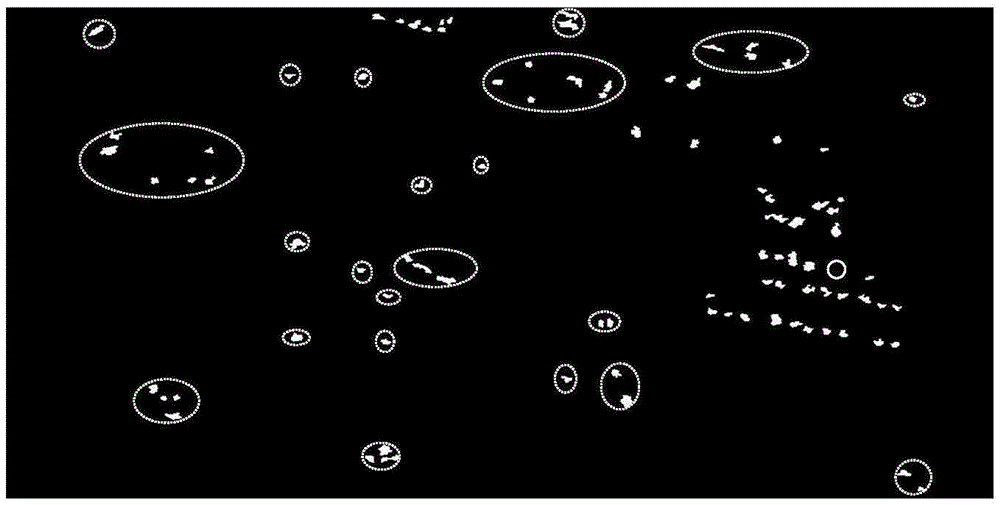Bayesian saliency based SAR image target detection method
A target detection and image technology, applied in image enhancement, image analysis, image data processing, etc., can solve problems such as inaccurate estimation of clutter statistical model parameters, incomplete structure, discrete target pixels, etc., and achieve good regional connectivity , the object structure is complete, and the effect of high detection accuracy
- Summary
- Abstract
- Description
- Claims
- Application Information
AI Technical Summary
Problems solved by technology
Method used
Image
Examples
Embodiment Construction
[0031] Embodiments and effects of the invention will be further described in detail below in conjunction with the accompanying drawings.
[0032] refer to figure 1 , the implementation steps of the present invention are as follows:
[0033] Step 1, perform superpixel segmentation on an input original SAR image A.
[0034] The concept of superpixels was first proposed by Ren et al., a scholar in the field of optical imaging, in 2003. The so-called superpixel refers to an image block composed of adjacent pixels with similar texture, brightness, color and other characteristics.
[0035] Superpixel segmentation is to divide the image into different superpixels with special semantics according to the similarity criterion. The superpixels obtained by grouping the pixels by the similarity between the pixels in the image can not only obtain the structural information of the image, but also reduce the complexity of subsequent image processing.
[0036] There are two purposes for supe...
PUM
 Login to View More
Login to View More Abstract
Description
Claims
Application Information
 Login to View More
Login to View More - R&D
- Intellectual Property
- Life Sciences
- Materials
- Tech Scout
- Unparalleled Data Quality
- Higher Quality Content
- 60% Fewer Hallucinations
Browse by: Latest US Patents, China's latest patents, Technical Efficacy Thesaurus, Application Domain, Technology Topic, Popular Technical Reports.
© 2025 PatSnap. All rights reserved.Legal|Privacy policy|Modern Slavery Act Transparency Statement|Sitemap|About US| Contact US: help@patsnap.com



